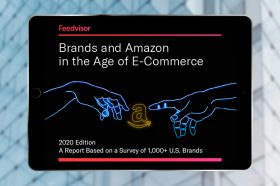Resources - Blog
What to Know About the Drastic Cuts to Amazon Associates Referral Rates

Stay on top of the latest e-commerce and marketplace trends.
On the same day in mid-April that Amazon’s stock reached an all-time high — due to its increased demand during the COVID-19 lockdown — the booming business also announced that it would be making significant cuts to its Amazon Associates affiliate commission fees.
This change went into effect on April 21, 2020. It is frustrating, to say the least, for affiliate members including online publishers and social media influencers who have been dependent on this income. Many have even built businesses around their participation in the program, and now their Amazon income has been cut by more than 50%.
Worse, these changes were implemented in the middle of the COVID-19 pandemic, when the U.S. was already in the midst of economic uncertainty. Amazon’s new commission structure slashed rates for several high-demand product categories. Now, more than a month later, affiliates are seeing the effects of these cuts in their commission checks.
What Is the Amazon Associates Program?
Amazon Associates is an affiliate marketing program that has been in place for several years. It allows members to advertise and link to Amazon products in exchange for a commission on a percentage of the sales.
The program has been a significant revenue generator for sites that link to Amazon products in their content through product guides, roundups, reviews, and more — including The New York Times, BuzzFeed, and Vox Media. Social media influencers and YouTube Creators who promote products to their followers have also profited from their share of Amazon sales through the program.
Referrals, which are the incoming traffic from other sites providing links to e-commerce stores, are the best-performing sources of traffic for online retailers. In the first quarter of 2020, Amazon’s third-largest traffic driver was referrals, after direct and organic search traffic.
What Are the Commission Rate Changes?
The product categories affected by Amazon’s drastic affiliate commission cuts include furniture, home, home improvement, lawn and garden, pet products, and pantry items, which dropped from an 8% commission to a 3% commission. Beauty, which offered a 6% commission, dropped to 3%. Groceries, which previously garnered a 5% commission, dropped to 1%. Health and personal care, which used to give affiliates a 4.5% commission, also dropped to 1%.
Amazon has not commented about the timing of this change and whether this decision was a result of the COVID-19 pandemic. The company only said that it regularly evaluates its program offerings to ensure it is competing with the broader industry, and that rate evaluations are standard practice in the industry.
Many speculate that this move is likely related to Amazon’s surge in traffic during the COVID-19 lockdown when most consumers were dependent on online shopping for many basic needs. Why would Amazon continue to pay for traffic that is already flocking there on its own?
This change arrived one month after Amazon cut its spending on Google Ads by 90%. It was a logical move in mid-March, considering the massive flood of consumers shopping on the site and the subsequent fulfillment and shipping challenges it faced.
Regardless of whether this move is a response to the pandemic, Amazon will now be keeping a much larger portion of its referral sales in its own pocket, while affiliate members are losing a significant portion of income in an already shaky economy.
To date, almost 19,000 people have signed a Change.org petition called “Amazon Affiliates Want Their Rates Back.” However, it is not likely that Amazon will be restoring its commission fees anytime soon.
How Can Affiliates Shift Their Strategy?
These unexpected changes are an essential reminder that diversifying revenue streams is crucial. Businesses cannot depend on Amazon alone. Its endless policy changes that always seem to pop up suddenly have the potential to disrupt business models overnight.
This was a wakeup call for Amazon Associate members who are now focusing on alternate affiliate programs, like those from Target, Walmart, eBay, and specialty retailers, like B&H Photo Video, Sephora, and hundreds of others.
Affiliates can also establish direct partnerships with brands and cut out the retailer middleman. When dealing directly with a broad range of top brands and emerging ones, you can gain greater control over your earnings.
The biggest takeaway from this is to not be entirely dependent on one revenue source — especially if that source is Amazon — whose policies can and often do change on a whim.
Learn what Feedvisor can do for your business.
When you partner with Feedvisor, you automatically receive access to our true, AI-driven technology and hands-on team of e-commerce experts. Contact one of our team members today to learn more about our end-to-end solution for brands and large sellers on Amazon, Walmart, and e-marketplaces.




